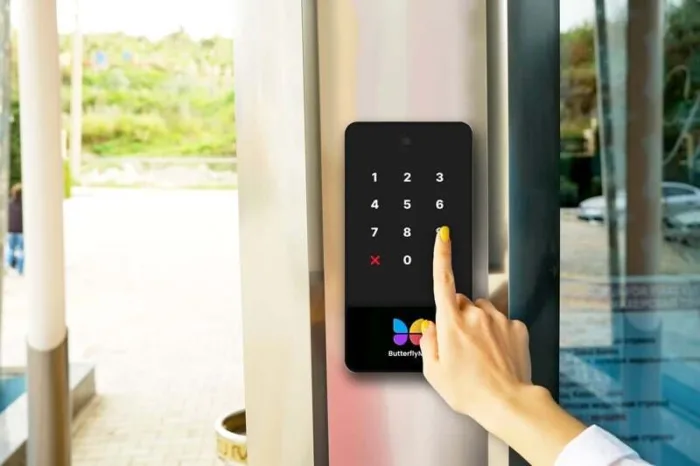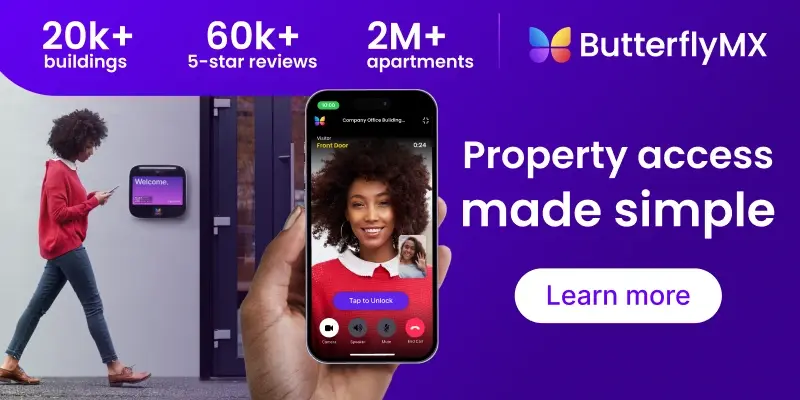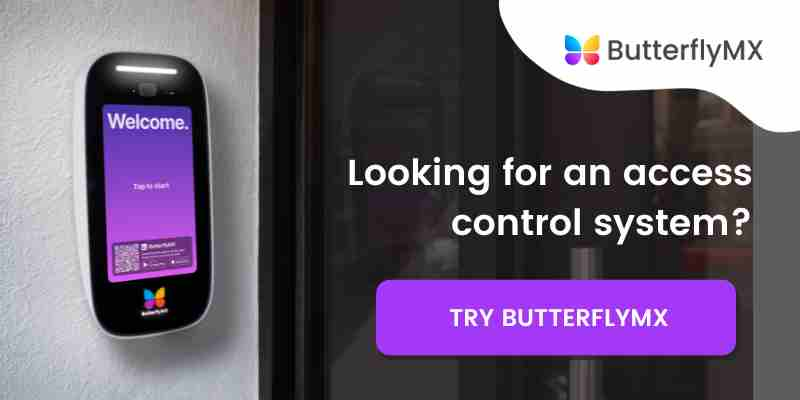Takeaways
- There are three main types of access control: physical, mechanical, and digital.
- Access control technology can be divided into communication technologies (RFID, near-field communication, and Bluetooth), infrastructure technologies (IP, PoE, and CAT6), and hardware technologies (electric locks, keypads, proximity readers, and cards/fobs).
- Access control technology offers integrations, multi-factor authentication, mobile access, cloud-based management, video capabilities, biometrics, analytics, security convergence, touchless access, and smarter buildings.
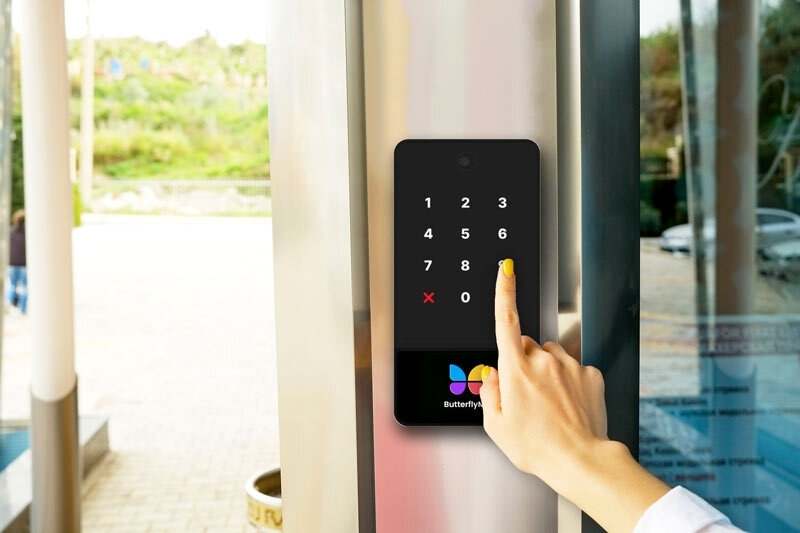
Every year, the technology around us seems to get more and more powerful. Think about it: The technology we use today was unimaginable even just five years ago. And the same is true about access control technology.
In this post, we will examine the history of access control technology and security systems. Next, we will review common types of access control systems and technologies. Finally, we will provide an access control list of access technology trends.
This post covers:
- History of access control technology models
- What to consider when selecting an access control system
- 5 types of access control systems to be familiar with
- Overview of common access control technologies
- Top 10 access control technology trends today
History of access control technology models
Over time, access control tech has developed from rudimentary physical techniques to advanced digital and computer-powered systems.
To understand modern access control systems and the trends that are shaping the future of controlled access, let’s first consider how we got to where we are today.
Here’s how access control technologies developed over time:
1. Physical access control
The first technologies used to control access were physical access control solutions. Physical access control consists of physical barriers — like fences, trenches, and walls — that regulate access into a building or property.
Today, we have more advanced technologies, but we still use the phrase “physical access control system” (PACS) to describe any system that restricts or allows access into a physical space, like a building or a room.
2. Mechanical access control
Eventually, people started developing and designing mechanical systems to complement the physical barriers used to control access. Mechanical access control technologies consist of mechanical locks and manual controls that require human intervention to operate.
Locks and keys have been used for centuries to control access into buildings and rooms — and we still use them today. Only relatively recently have we started enhancing and replacing these forms of mechanical access control with more advanced digital access control technologies.
3. Digital access control
The invention of the computer revolutionized the access control industry. Today, you’ll find digital or logical access control technologies that regulate access.
What’s more, we now need to control access to more than just physical spaces — we also want to control who can access digital assets. For example, we use passwords and other digital technologies to control access to computer files and other non-physical resources.
Digital access control systems consist of intelligent hardware powered by software. Many of these systems have completely eliminated the need for human intervention.
Watch how ButterflyMX works:
What to consider when selecting an access control system
Access control technology comes in all shapes and sizes. So, you must determine which solution is most suited for your property based on a few factors.
When selecting an access control solution for your property, ask yourself: What access credentials would you like to use? There are several types of access control credentials, all of which you should consider for the best fit.
The user credentials you’ll have to choose from include:
- PIN codes
- Key fobs and access cards
- Mobile phone
- Biometrics
Ideally, it’s best to choose access control technology that supports multiple credential types, so users have a convenient experience.
5 types of access control systems to be familiar with
There are five types of access control systems that you will commonly encounter. Additional systems tend to be hybrids of the five.
The five types of access control systems are:
- Rule-based access control. For this system, administrators dictate rules that grant access rights. For example, not allowing users to enter during nighttime hours is one such rule.
- Mandatory access control. Otherwise known as MAC, mandatory access control grants authorized persons access based on security clearances. It is often used at government or high-security properties.
- Discretionary access control. A system administrator dictates who has the authority to enter. This is one of the most common systems for residential properties.
- Role-based access control. This type of system grants entry based on a user’s roles within an organization, such as lower, mid-level, and executive employees. As a result, it is often used in businesses.
- Attribute-based access control. This operating system grants entry based on both rules and roles. As a result, it’s a combination of role-based access control and rule-based access control.
Overview of common access control technologies
We covered the history of access control solutions, but what are the actual technologies that power access control systems? Below, we outline some of the most popular access control technologies, including access control components.
We’ve broken down access control technologies into three categories:
Communication technologies
RFID
RFID (radio frequency identification) technology enables communication between devices via electromagnetic waves. An RFID access control system consists of readers and tags, which store data and serve as a credential. When the tag is presented to a reader, its RFID chip activates and shares the access information it contains.
Near-field communication
Near-field communication (NFC) technology is similar to RFID technology but only works at very close ranges. NFC systems operate with a reader and a credential, which contains identifying information. When the credential is held near the reader, both devices can communicate over an electromagnetic field.
Many modern NFC access control systems use smartphones instead of key cards or fobs. When a user holds their smartphone near the NFC reader, it creates a communication channel that enables data transactions. Then, the reader can assess the credential and grant or deny access accordingly.
Bluetooth
Bluetooth is a short-range, wireless technology that enables communication between devices. It operates in the ISM radio band, which is a portion of the radio spectrum used for industrial, medical, and scientific purposes. As a result, it’s free to use and doesn’t require a license or fees to implement.
Bluetooth Low Energy (BLE) is the most recent version of Bluetooth communication technology. BLE devices can operate and communicate up to 800 feet apart. Bluetooth access control systems consist of a reader and a Bluetooth-enabled credential, often a smartphone.
Infrastructure technologies
IP access control
IP access control is an electronic method of access control that relies on the Internet and the Internet Protocol to verify credentials. An IP access system sends data from a user’s credential to a server, which “reads” the data and determines if the user is authorized to enter.
So what separates an IP access control system from a traditional access controller? Unlike traditional systems, IP controllers have a direct LAN/WAN connection, which means they can track all data needed to control access. Additionally, IP systems have their own onboard network interface that allows them to function without a terminal server.
IP systems have become more commonplace, given the ubiquity of the Internet and the expansion of the Internet of Things.
PoE
PoE (Power over Ethernet) is a solution that simultaneously powers devices and provides an internet connection. With one cable, a device can receive both data and electric power.
Access control systems with PoE devices are simpler and more affordable to install and maintain. PoE-networked access control infrastructures also offer streamlined communication between devices and simplified system management.
CAT6 cable
A CAT6 cable is an internet cable that’s more robust than a CAT5 Ethernet cable. While CAT5e cables may suffice for certain devices and smaller infrastructures, CAT6 and CAT6A cables deliver enhanced reliability, speed, and performance.
CAT6 cables are ideal for access control devices because they offer greater bandwidth and faster speeds. So, access control systems that operate with CAT6 cables are more prepared for heavy, ongoing usage and high network demands.
Hardware technologies
Electric locks
As one of the most vital components of any access control technology, electric locking hardware is what physically prevents entry from potential risks. In order for your door to grant access to a user, it must be connected to the access control system. Once it receives a signal from the system to open, the lock will release. Otherwise, the door will restrict access.
Keypads
Rather than using physical credentials, keypads are a keyless alternative. These devices require a user to input a designated PIN code to access the property. That said, some keypads may also accept fob or card credentials.
Proximity readers
Also known as card or fob readers, proximity readers are similar to keypads in that they accept a credential to let in a user. However, proximity readers don’t have a keypad. Instead, they detect a physical credential when it comes within a certain radius — usually a couple of inches.
Cards and fobs
If you opt for a proximity reader, you’ll also need to purchase physical credentials — either key cards or fobs. These devices are small enough to fit into your pocket or bag.
Key cards are typically made of PVC, while fobs vary widely. Regardless of the format, both contain the necessary technology for the reader to scan the credential. The credentials are stored on a chip embedded within.
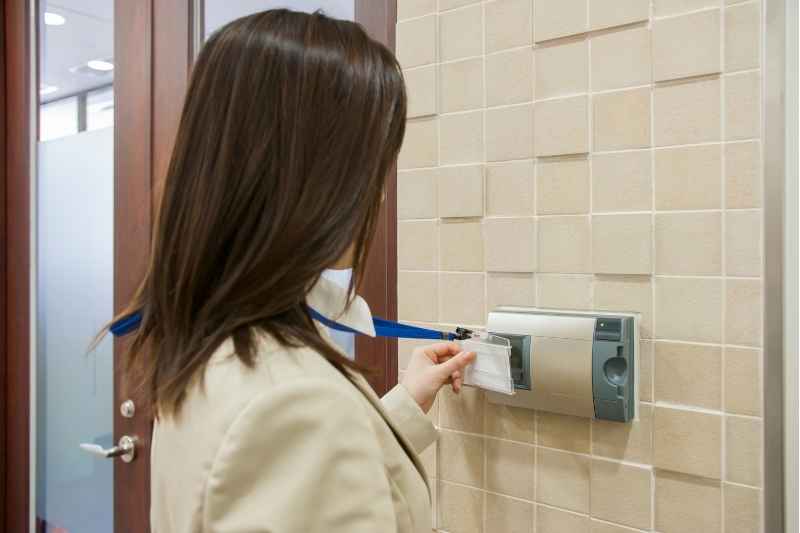
Top 10 access control technology trends today
To understand what the future of access control holds, you have to assess emerging trends in the field and anticipate the technology that will continue to shape these systems. The latest access control technology is sleek, powerful, and — as you’ll soon notice — primarily powered by mobile devices.
Here are the top 10 most popular access control technology trends today:
- Integrations
- Multi-factor authentication
- Mobile access control
- Cloud-based systems
- Video access control
- Biometric access control
- Learning from analytics
- Security convergence
- Touchless access control
- Smart buildings
1. Integrations
More and more access control providers are opening their APIs so that their products can integrate with others easily. Devices that integrate with each other essentially “talk” to one another, therefore allowing systems to share data and interface with third-party platforms.
By choosing access control products that integrate with other property technologies, you’ll create efficiencies that streamline your daily operations. For example, integrating your access control system with your building’s smart locks will allow you (and your tenants) to manage both devices from one app or platform. This can save time while creating much-desired conveniences for residents.
2. Multi-factor authentication
Security concerns are at an all-time high as hackers, phishing attempts, and scamming efforts barrage the public. As a result, people are seeking ultra-secure technologies that protect them from these threats.
Multi-factor authentication (also called two-factor authentication or 2FA) is a type of authentication technology that requires users to present two or more forms of identity verification. In other words, someone who wants to gain access must have more than one credential or multiple sources that prove their identity.
Access control systems with multi-factor authentication enhance security by making it harder for unauthorized people to gain access. And multi-factor authentication can be used to protect both physical and digital assets.
3. Mobile access control
An estimated 6.4 billion people in the world own a smartphone. That statistic alone helps illustrate why mobile access control is quickly becoming the norm.
And it’s not just that more and more people are using smartphones — smartphones are simultaneously getting smarter every year. Today, people use their smartphones for everything from ordering food to finding a date. So, access control providers are growing wise to this trend and turning smartphones into keys.
Using a smartphone as an access controller to unlock doors and manage access to buildings is the future of touchless access control solutions. So if you’re seeking a system for a new development or a retrofit, your best bet is to choose a mobile access control system.
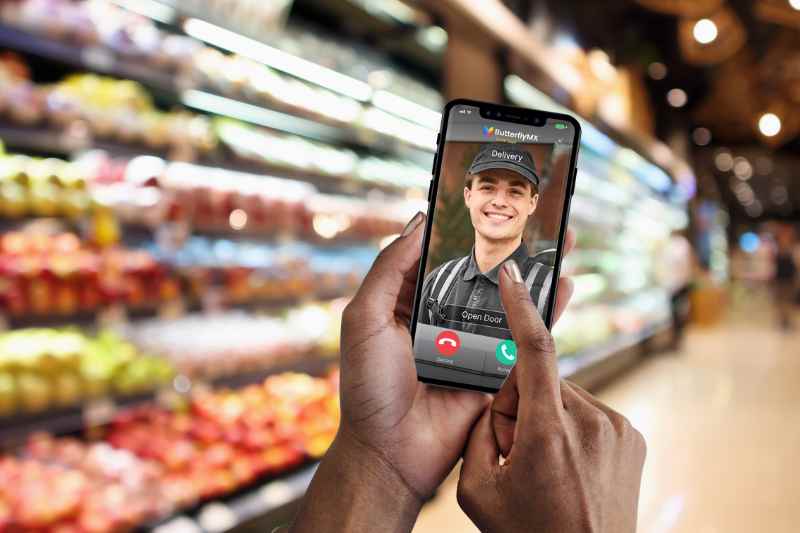
4. Cloud-based systems
Access control technology has made it easier than ever for system administrators to control who enters a property and when. And cloud-based technology has simplified the process of actually managing your access control system.
With a cloud-based access control system, you can ditch the cumbersome, expensive on-site access control server and instead host your data in the cloud. As a result, you’ll enjoy automatic data backups and software updates. You can also manage the system from anywhere, on any device.
Cloud-based systems are so popular because they’re easier to manage, and they save you both time and money. More and more access control products entering the market are powered with cloud-based software.
5. Video access control
Thanks to its security-enhancing nature, video access control is gaining speed. With a video access control system, tenants can actually see who’s requesting access before letting them in. That visual confirmation can be the difference between granting access to a trusted friend or colleague and a complete stranger.
Most video access control systems come in the form of a video intercom. These systems allow visitors to request access from residents via a video call. That way, residents can see and talk to guests before letting them in. The best video access control systems are also mobile systems, meaning residents answer video calls and manage access from their smartphones.
6. Biometric access control
PIN codes can be shared and key cards can be copied. For these reasons, many are looking to access control readers that utilize biometric access control. Biometric access control, and identity-based access control in general, has come a long way in the past decade, with many similar technologies implemented into the devices we use daily.
More and more access control solutions are implementing fingerprint scanning and facial recognition technology because these organic credentials are unique to the individual. Of course, these technologies are still being developed and enhanced, but you can expect biometric access control to increase in popularity moving forward.
7. Learning from analytics
Data is a powerful tool in today’s world. Access control technology trends show that data is being used to identify patterns in how people interact with the system. When paired with artificial intelligence, the data will create new opportunities for properties.
Some properties are already implementing these technologies to help manage amenity spaces more effectively or to assist in renewing leases with existing residents. In addition to these applications, the same data is used to help find opportunities for automation. Thus, properties are running more smoothly for the better of everyone.
8. Security convergence
One of the latest trends in IT is a concept known as security convergence. Security convergence is the idea of merging physical security with cybersecurity. As access control systems become more interconnected, many are looking to streamline the workflows of both these fields, especially as remote work becomes more prominent.
By seamlessly integrating, properties can approach security as a whole rather than in parts. As a result, unified security will greatly reduce security hazards that may come up with separated systems. Not to mention, they can cut down on the resources needed to manage these systems when they’re all accessible from one place.
9. Touchless access control
The COVID-19 pandemic tremendously affected how we see touchless systems, from public entryways and towel dispensers in the restroom to food and grocery deliveries. Touchless technology is here to stay.
Touchless access control systems are especially popular because of the convenience and health safety they offer users. To implement touchless access control, some systems may utilize facial recognition or proximity technology. But most systems use credentials like a proximity card or a mobile app. Then, users won’t have to touch as many surfaces when accessing the property.
No matter the credential, touchless access control maintains the health of users without sacrificing the property’s security.
10. Smart buildings
Lastly, as more devices begin to ‘talk’ to one another, the smarter our buildings will become. Smart buildings are becoming even smarter with the Internet of Things (IoT) devices. And property access is one of the best places to start when developing a smart building.
Rather than being updated physically by a technician, access control technology can receive updates directly from the cloud, providing new features almost instantly. As more updates are rolled out, these technologies will continually improve how we access and use spaces within properties. Simultaneously, these devices will collect and analyze data to further improve the use of the system and the surrounding environment.
Most importantly, access control technology will become part of a building’s centralized infrastructure to ensure security and convenience for users.
